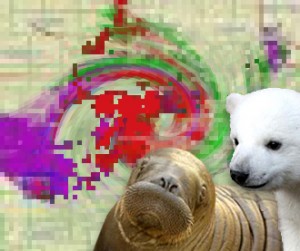 Weather is a topic that people never seem to tire of discussing. The National Weather Service has its roots in a tradition of weather observation by founding fathers such as Thomas Jefferson, who had a keen interest in observation dating back prior to 1776. Networks of citizens who were interested in recording and sharing weather observations grew in the 1800s.
Weather is a topic that people never seem to tire of discussing. The National Weather Service has its roots in a tradition of weather observation by founding fathers such as Thomas Jefferson, who had a keen interest in observation dating back prior to 1776. Networks of citizens who were interested in recording and sharing weather observations grew in the 1800s.
The U.S. Army operated the first national weather service in 1878. Today the National Oceanic and Atmospheric Administration (NOAA) maintains a vast system of technology and communications to keep the public up-to-date about changes in our planet’s weather.
When televised or viewed on the Internet, weather reports originating with the National Weather Service are often accompanied by whirling radar storm images, described seasonally by words like arctic blast, polar air mass, blizzard, or cold front. These minute-by-minute, visual updates of impending weather from the far north can convince even the most media savvy among us to batten down the hatches and prepare for being “snowed in” or worse. The angry red eye of a Doppler radar image with “weather alert” information scrolling along the bottom of a TV screen can make even the calmest person sit up and take notice.
In the comfort of a warm home, the drama of arctic-like weather is often only as personally threatening as wondering about how to safely shovel snow. When predicted storms do not materialize, “all that weather hype” can leave us feeling let down by the media who “promised” a big weather event.
What if you happen to be located at or near the North Pole where those televised arctic blasts originate? If you are a walrus calf or a polar bear cub, for example, surviving in normal arctic weather conditions is challenging enough. Unpredictable and brutal storms can mean the difference between life and death. In the film and accompanying video game Arctic Tale, a young walrus named Selah and Namu, a baby polar bear, face just such a sudden, brutal storm and more in their polar environment.
Produced by National Geographic and Paramount Classics, Arctic Tale calls attention to habitat loss and climate change in the Arctic using a narrative provided by the adventures of two young animals. The movie was released in 2007 and is narrated by pop diva and film star Queen Latifah. Filmmakers Adam Ravetch and Sarah Robertson used 15 years of stunning footage they had recorded to tell the animals’ stories. “The blizzard” should have a screen credit—temperatures drop to 40 degrees below zero with winds of 80 mph as the animals struggle to survive and find food.
In the Arctic Tale game, players assume the identities of a cub or an adult polar bear, a walrus, an arctic fox, or an orca whale and encounter 16 different game challenges – including unpredictable weather—in beautiful and realistic 3-D land, snow, ice and water environments.
No matter how cold it is outside your house, next time you happen to see an arctic air mass on television heading toward your town or city, think about how the animals in the polar regions are challenged to survive big storms in their already harsh climate. If you happen to play the Arctic Tale video game, you may have an opportunity to try a few survival strategies of your own. At the National Geographic web site, Arctic Tale video game reviews are being gathered from players—let them know what you think.
This article was written by Carol Minton Morris. For more information, see the Contributors page. Email Kimberly Lightle, Principal Investigator, with any questions about the content of this site.
Copyright June 2008 – The Ohio State University. This material is based upon work supported by the National Science Foundation under Grant No. 0733024. Any opinions, findings, and conclusions or recommendations expressed in this material are those of the author(s) and do not necessarily reflect the views of the National Science Foundation. This work is licensed under an Attribution-ShareAlike 3.0 Unported Creative Commons license.

